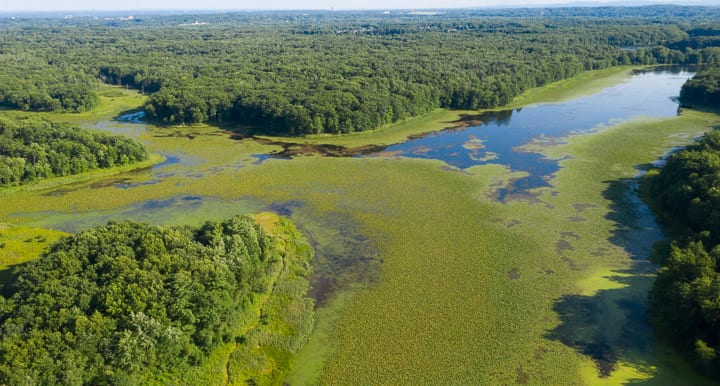COLONIE — The $3.2 million project to share an emergency backup water system with the City of Albany is operational, rendering the Stony Creek Reservoir obsolete.
John Frazer Jr., head of the town’s Water Department, during a presentation to the Town Board, said while there are still some final details to finish up, the pipes are in the ground and Albany has already had to use the system twice.
There are two hookups, one at Albany Shaker Road and one on New Karner Road. Combined, if something happens to Colonie’s water sources, they can provide town residents with enough water to satisfy its average daily usage.

The relationship is ideal, Frazer said, because the primary sources of water for the town and the city are distinctly different and each susceptible to different types of risks.
For example, a drought or dry weather will lower levels in the Alcove Reservoir in Coeymans and Basic Creek Reservoir in Westerloo, Albany’s prime sources of water, while the Mohawk River, Colonie’s main source of water, is largely immune to drought. Frazer said the spot where Colonie gets its water is a pool, upstream from a damn, and was not impacted by the most severe drought in a century during the early 1960s.
But, Colonie has a difficult time processing river water after severe storms like Irene that can stir up sediment and other things. The reservoirs are largely standing bodies of water that benefit from heavy rainfall.
Should Albany need Colonie water, the town bills the city and vice versa. The total cost of the project was split evenly, with 60 percent being covered by a state grant.
The Loudonville connection includes 4,000 feet of 24-inch pipe with the capacity to pump 10 million gallons per day. The connection on New Karner Road entails 3500 feet of 16-inch pipe and can generate 2.4 million gallons a day.
“From those two connections we can meet our average flow on any given day should something happen at our treatment plant or the wells or the river,” Frazer said.
All told, the town’s water district can generate a capacity of 44 million gallons per day with 38.5 million gallons coming from the Mohawk and the rest from wells along the river.
The damn creating the Stony Creek Reservoir was built in 1952 and filled in a year later. But, the pipes running under the river to Niskayuna and up River Road to the treatment plant on Onderdonk Avenue have not been used since 2004.
“The project we started a few years ago now makes the reservoir obsolete to the town of Colonie,” Frazer said.
And, it costs about $218,000 a year to own and maintain the reservoir between taxes to the Shenendehowa School District and the Town of Clifton Park and maintenance like mowing and upkeep of the damn.
The town has toyed with the idea of selling the reservoir in Clifton Park and the some 1,000 acres that surrounds it but so far a deal has not come to fruition.
Water restrictions
On average, the town uses 10 million gallons a day, but on three consecutive days in June, that number spiked to more than 20 million gallons for the first time in years. With a capacity to generate 44 million gallons a day, on resident asked why there was a water restriction in place.
The answer was simple: COVID-19.
The chemicals used to make river water potable are different in the summer and winter and the changeover entails an involved process that takes manpower and time. Water Department employees were essential workers by the state, but shifts were split in half to avoid infecting the entire crew so the process could not be compete in time to make the seasonal chemical transition. The bottom line, Frazer said, is capacity was cut by a third.
Combine that with a dry summer — there was a half inch of rain in June — and the unprecedented usage mentioned above and the restrictions were a prudent decision.
It is the first time since 2004 the town has had to issue water restrictions. The reason for that is the water treatment plant was upgraded in 2005 to increase capacity.



